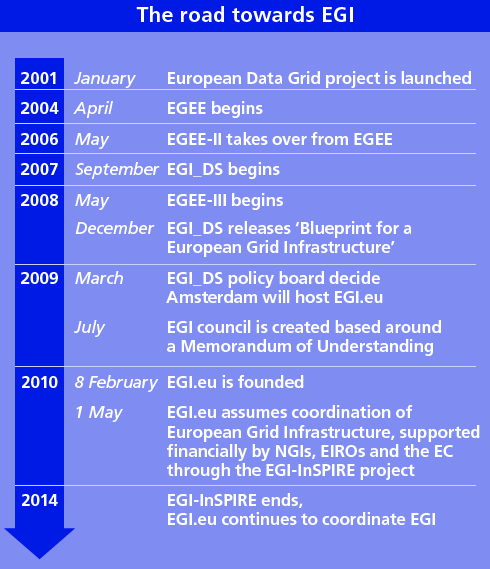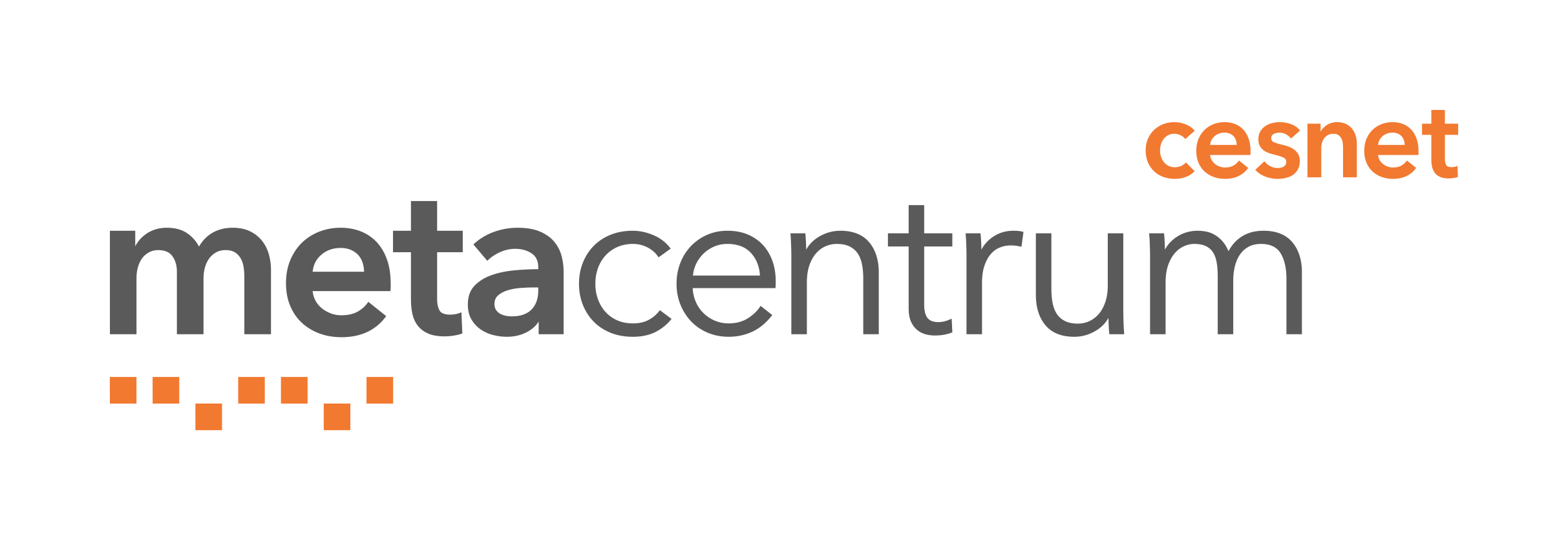National Grid Advantages
CESNET represents the National Grid Initiative (NGI) of the Czech Republic. The National Grid Infrastructure is operated by MetaCentrum, CESNET department responsible for coordinationg and managing grid activities in the Czech Republic on behalf of the Czech NGI.
MetaCentrum operates and manages distributed computing infrastructure consisting of computing and storage resources owned by CESNET as well as those of co-operative academic centers within the Czech Republic. MetaCentrum is responsible for building the National Grid and its integration to related international activities, especially in the European Union. It is actively involved in many international Grid projects such as EGI, InSpire, EUAsiaGRID, CHAIN.
Benefits
- Owners of the computational resources have priority or exclusive access to theirs facilities. At the same time they are getting significant higher computing power for research.
- Common authentication trust domain, this means one login and one password access to all resources involved in MetaCentrum.
Take an advantages of MetaCloud as user
Cloud computing is a great tool for advanced users with specific requirements. Virtual machines are managed by the user only. Unlike MetaCentrum, there is no batch system for planning user's jobs. User is responsible for security issues, installation and regular updated software running in virtual machine.
Take a look to Workflow examples.
Success stories
Peachnote
The Peachnote.com uses virtual machines in cloud to process digitalized scores found in several large libraries, recognize them and create corpus of scores for further experiments.
KYPO
The KYPO - Cyber Exercise & Research Platform project aims to create an unique environment for research and development of new methods to protect critical infrastructure against cyber attacks. A developed virtualized environment will be used for simulation of complex cybernetic attacks against critical infrastructure and analyze their behavior and impact on the infrastructure. The KYPO will serve for research and development of new security tools and methods. In addition, it will be used for educating members of security teams.
Instructions for a Resource Centre
If you are a site representative and you are interested in joining the NGI infrastructure, please send an e-mail to support@metacentrum.cz. You will be assisted in the process of becoming part of a grid operational unit (NGI), and in the following steps from site registration and to certification.
What is EGI?
Video presentation: EGI and e-Infrastructures in Europe(source http://www.egi.eu/)
EGI brochure (pdf), EGI blueprint (source http://www.egi.eu/)
 On 1 May 2010 EGI took over the coordination of European grid infrastructure. Through the previous DataGrid and Enabling Grids for E-SciencE (EGEE) projects, researchers across the globe reaped the benefits of grid technologies. Now EGI.eu, the organisation established to coordinate EGI, hopes to continue this trend. Although EGI marks a change from short-term funded projects to a long-term service, for the first four years EGI.eu will be financially supported by the European Commission funded project EGI-InSPIRE. EGI will need to develop strong coordination, engage with user communities and forge links with other providers if Europe is to retain its competitive edge in the global landscape of e-Infrastructures.
On 1 May 2010 EGI took over the coordination of European grid infrastructure. Through the previous DataGrid and Enabling Grids for E-SciencE (EGEE) projects, researchers across the globe reaped the benefits of grid technologies. Now EGI.eu, the organisation established to coordinate EGI, hopes to continue this trend. Although EGI marks a change from short-term funded projects to a long-term service, for the first four years EGI.eu will be financially supported by the European Commission funded project EGI-InSPIRE. EGI will need to develop strong coordination, engage with user communities and forge links with other providers if Europe is to retain its competitive edge in the global landscape of e-Infrastructures.
The main objective of the European Grid Initiative (EGI) is to establish a sustainable grid service for the European scientific community, through the creation of a long-term, pan-European grid infrastructure. The European Grid Initiative (EGI) is a partnership between National Grid Initiatives (NGIs), which are responsible for grid infrastructure related matters in each participating country, and a coordinating body, the EGI organisation (EGI.eu), based in Amsterdam. Its central role is to facilitate the interaction and collaboration between NGIs.Within the EGI partnership, NGIs and EGI.eu are thus working together to operate and further develop a sustainable pan-European grid infrastructure, enabling optimal sharing of computing and data resources, and supporting collaborative scientific discoveries in the European Research Area (ERA).
EGI.eu is governed by a Council, which is responsible for providing the long-term direction of the organisation, and the Executive Board, which provides guidance to the Director, who leads the organisation on a day-to-day basis. The EGI Council currently consists of 30 NGI members as well as two EIROforum members. Projects included in the European Strategy Forum for Research Infrastructures (ESFRI) Road Map - the EC’s initiative to develop the scientific integration of Europe and to strengthen its international outreach - are also invited to contribute to, and benefit from EGI, as is any organisation that subscribes to EGI’s objectives.
The long-term sustainability model of EGI relies primarily on the NGIs, which have long-term guaranteed funding at the national level. The computing resources will continue to be hosted and funded within the member states or the relevant international facilities. EGI.eu, as the coordinating body, will be funded through membership fees paid by NGIs, with a contribution from the European Commission (EC).
What is an NGI?
NGIs (National Grid Initiatives) are officially recognised bodies that ensure the operation of the grid infrastructures in their own country, and an effective and transparent representation of the needs and wishes of their scientific communities, resource providers and e-infrastructure related institutions. They provide a single point of contact in each country, which is fundamental for efficient coordination between the NGIs, users, resource owners and other interests.
Within the EGI model, NGIs are free to organise and distribute their resources and services among their community as they want. Computing resources continue to be hosted and funded within the member states or the relevant international facilities.
Technically and organisation-wise NGIs ensure that
- storage and computing resources are provided according to agreed conditions and standards
- the national grid Infrastructure is continuously operated and maintained to an agreed level of service
- user communities are registered and supported
- resource owners/providers are registered and supported
- standards, policies and other consensus accepted by EGI are implemented.
What is ESFRI?
The European Strategy Forum on Research Infrastructures (ESFRI) roadmap projects span social and biomedical sciences, earth and physical sciences, energy, infrastructures and analytical facilities. But despite their variety, the ESFRI projects all have one thing in common: they need to store and analyse vast amounts of data.
In the coming years EGI plans to collaborate with the ESFRI projects, expanding the infrastructure to support these communities. To date, the ESFRI projects are all in different stages of maturity. While some have mapped their storage, data and processing requirements, others are still working towards this. EGI can offer support in a variety of ways, from consultancy to helping the ESFRI projects become expert users of the infrastructure.
